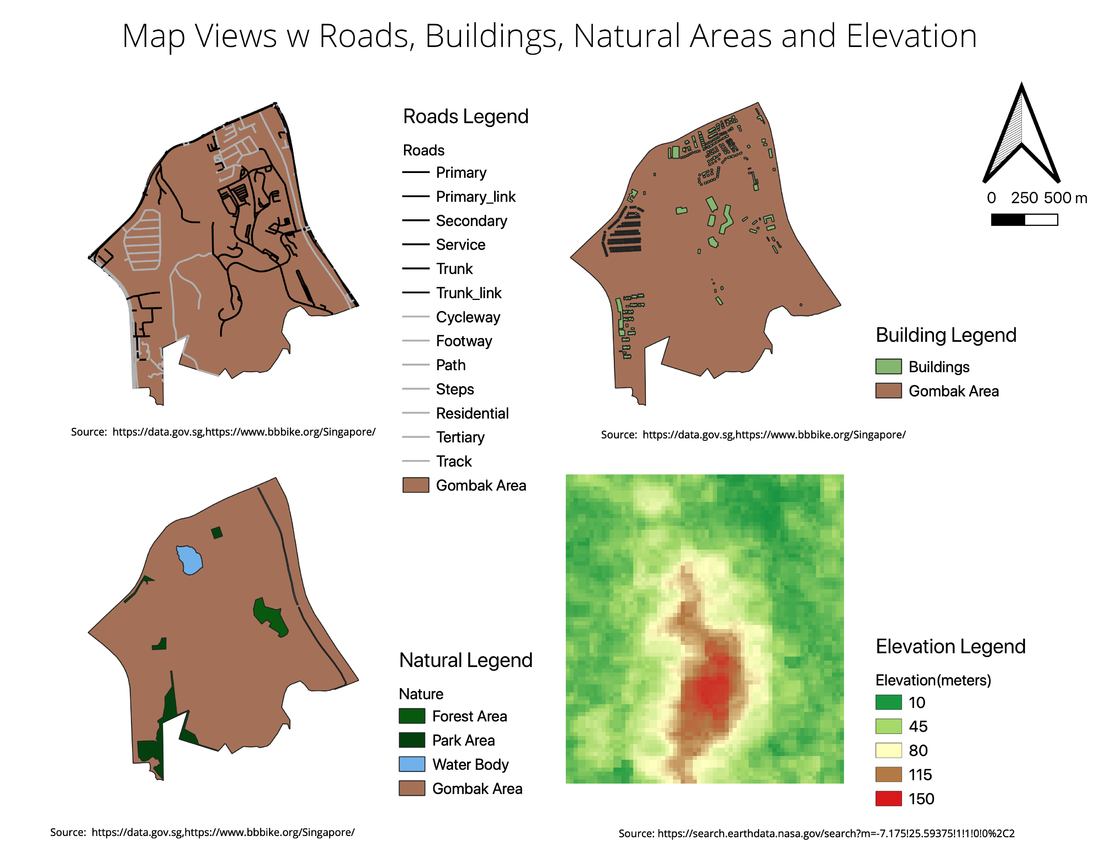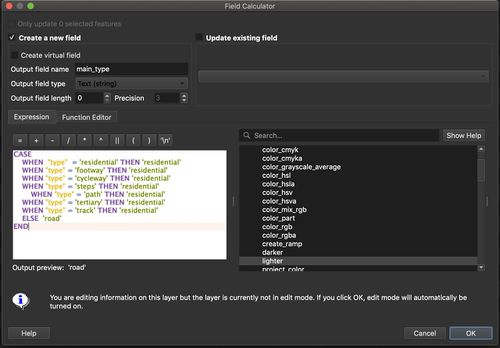SMT201 AY2019-20G1 EX2 Eugene Choy Wen Jia
Contents
Objective
To identify a suitable location for building a National Communicable Disease Quarantine Centre.

Part One - Map Views w Roads, Buildings, Natural Areas and Elevation
Map View w Roads
The road network in Gombak seems to be somewhat sparse as there are large areas which are not covered by roads. This will be a consideration as we are looking for suitable location that are accessible. However, the lack of road network could also suggest that there are large plot of area that might be available for our selection process. For the map view, I used black to represent the roads that can be used for transportation of materials to a suitable site. The grey roads represents paths/walkways or roads that leads to residential area which will not be used for this study. The roads indicate in grey will be excluded for the next part of the analysis such as the proximity map.
Map View w Buildings
The Buildings in Gombak is also somewhat sparse which means that are large area of land that are available for us to pick from as suggested previously by the sparse road network in Gombak. Most of the buildings in Gombak seem to be concentrated near the perimeter of the Gombak area.
Map View w Natural Areas
There are also some Natural Area features found in the Gombak Area. There are some forest and park area represented in dark green as well as water bodies represented in blue in this area. They are located near to the perimeter of the Gombak Area. However most of the natural areas seem to be near already existing buildings so it probably will not play a very huge part in the selection of area.
Raster w Elevation
The raster is represented with green being the low-lying land, yellowish to be medium elevated land and red being land that are elevated at the highest. From the raster map, it seems like the lower middle of Gombak is the most elevated part, which probably is the reason why that area seem to be the least populated with road networks or even buildings.
Part Two Proximity Raster w Roads, Buildings, Natural Areas and Slope Raster layer
Proximity Raster w Roads
The Gombak road area is first processed to export a layer with non Residential roads first before a Road raster is generated on the non Residential Road followed by the Proximity Raster for the layer. This is because roads that links to residential area should not be considered since we will already be using buildings to represent the population. It is also unlikely for resources to be transported on those road networks.
As Accessibility is one of the important consideration for the selection of the ideal area, The Proximity Raster map is used to determine the distance of a road from a particular (5*5) pixel in the area. Green is used to represent pixels that are closest to a particular road, yellow being moderately close and red representing that a particular pixel is a big distance away from the road. The bins for the colour gives preference to pixels less than 150m away from road with the colour green and anything else more than that will be either yellow or red
Proximity Raster w Buildings
Since we are trying to avoid building the Quarantine center near to the population (HDB, Schools, Public Area...), the Proximity Raster map gives preference to pixels which are at least 250 meters away from the building which is indicated with the color green as ideal. Anything lower than 250 will be labelled either yellow or red with red being alarmingly close to the buildings in Gombak.
Proximity Raster w Natural Areas
Slope Raster Layer
References
The Colors on Map - https://www.thoughtco.com/colors-on-maps-1435690ra
Photo by Thad Zajdowic from https://freeimages.com/


